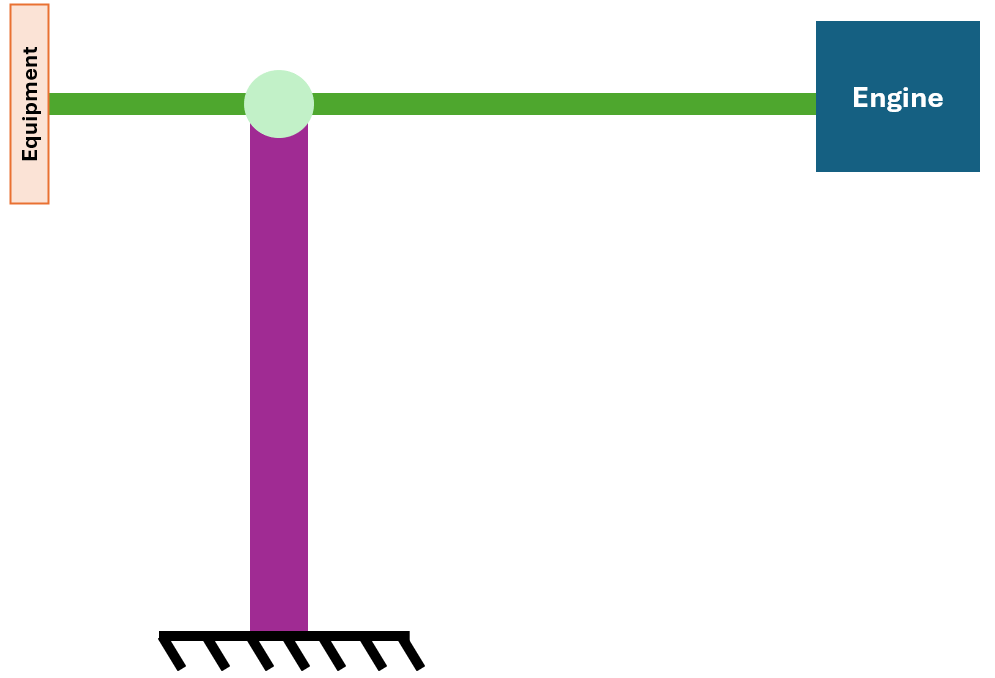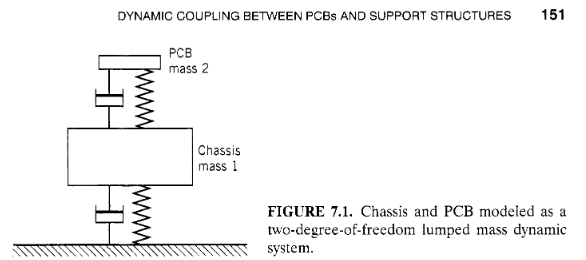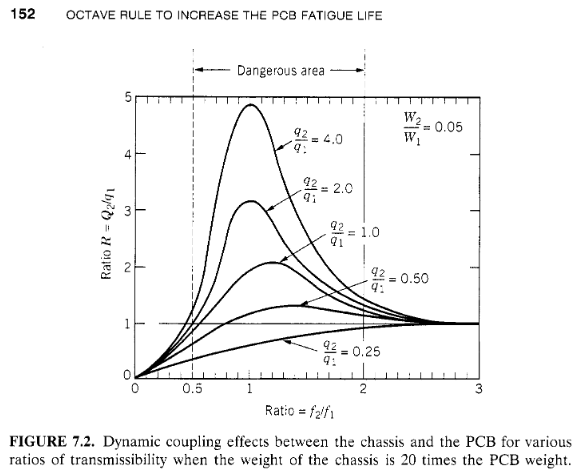TAGGED: #Modal_Analysis, psd, random-vibration, static-structural, vibration
-
-
January 7, 2025 at 11:02 am
AR
SubscriberHello,
I'm making a model of a motor mount. I need to select dampers or anti-vibration elements at the end of the control and measurement equipment. However, I don't know how to characterize these elements. I have a PSD that would generate the motor so I have done a random vibration, but I don't know what result to extract to characterize the vibration mitigation elements of the instrument bay. What should I use?
-
January 7, 2025 at 12:50 pm
peteroznewman
SubscriberIt's not clear from your brief description if you are trying to design a vibration isolation system, or if you are trying to analyze (characterize) a specific vibration isolation system.
Are you trying to isolate the vibration from the measurement equipment or the ground?
Please expand on the details of your task.
-
January 7, 2025 at 2:13 pm
AR
SubscriberHi Peter,
You are right, I have not made myself clear. Right now, I want to design the vibration isolation system to isolate the equipment bay from the rest of the structure vibration. Therefore, I want to extract from the results of the model I have made the necessary data to design a system that eliminates or reduces the vibrations in the equipment. However, I have not designed these systems before. What should I use, the acceleration that the equipment undergoes or what?
-
January 7, 2025 at 10:34 pm
peteroznewman
SubscriberI recommend doing some reading on vibration isolation system design. A good reference textbook that I own is Vibration Analysis for Electronic Equipment by Dave S. Steinberg. Chapter 7 is Octave Rule, Snubbing, and Damping to Increase PCB Fatigue Life. Chapter 9 is Designing Electronics for Random Vibration and 9.23 is the Octave Rule for Random Vibration. Steinberg uses a simplified representation of a chassis and a PCB. These are represented by a spring-damper from the engine frame where the PSD input is present, to the chassis which is represented as a point mass, then another spring-damper from the chassis mass to the point mass that represents the PCB. The chassis is usually going to have more mass than the PCB. Since the chassis mass and PCB mass are connected by the spring-damper connecting them, dynamic coupling occurs.
You should build a Modal analysis of the chassis of the measurement equipment box. The bolt holes that connect it to the motor frame become fixed supports. Internally, the lighter and more delicate measurement instruments are connected to features inside the equipment box chassis. Look at the natural frequencies of the structure of the chassis supporting the measurement instruments. Now build a Modal analysis for each of the measurement instruments only. The features that hold each instrument to the chassis become fixed supports. The resulting natural frequencies of the chassis and the various instruments should be separated by more than one octave (a factor of 2) to avoid severe dynamic coupling. For example if the chassis has a natural frequency of 100 Hz, each instrument must have its first natural frequency be greater than 200 Hz. This is called the Forward Octave Rule. You would change the design of the chassis to achieve this result, assuming you don’t design the instruments. When you do that, the PCB is beyond the Dangerous area because the frequency ratio is greater than 2.
-
January 17, 2025 at 9:26 am
AR
SubscriberThank you very much for your answer Peter! I will take a look at the book you mentioned.
On the other hand, when making a modal model in Ansys, a lot of frequencies are usually generated for a structure. How do I choose the frequencies with which I should have a separation of more than one octave? Normally, what I do is look at the frequencies whose ratio of effective mass to total mass is greater. However, I don't know what criteria to use to choose one value or another. Which ones would they be, those with a ratio greater than 0.1 or greater than what number?
-
January 17, 2025 at 1:51 pm
peteroznewman
SubscriberThe Steinberg book was originally written in 2000 and descirbes technology from 25 years ago. Electronic equipment common at that time had a PCB, edge mounted with discrete chips on the PCB. A modal analysis of that PCB with the mass of the components attached and the edges connected to ground is done. The first modal frequency of that board on grounded edges is one of the frequencies. Another modal analysis is the chassis with the PCB connected at the edges to the rails in the chassis is built. The first modal frequency of the chassis is the other frequency. These are the two frequencies to use to check the frequency ratio PCB/Chassis > 2.0
-
- You must be logged in to reply to this topic.



-
3492
-
1057
-
1051
-
965
-
942

© 2025 Copyright ANSYS, Inc. All rights reserved.










